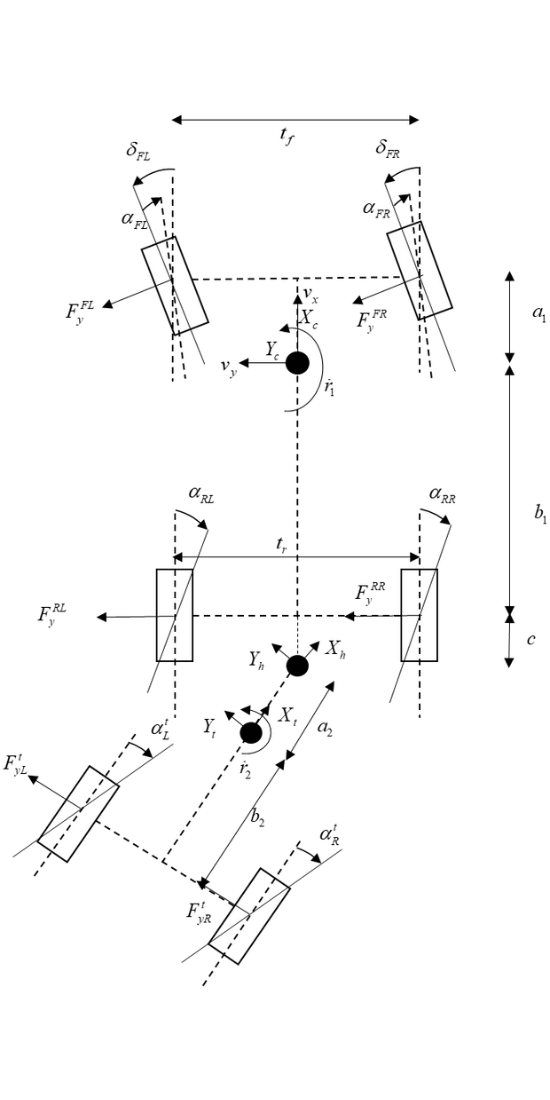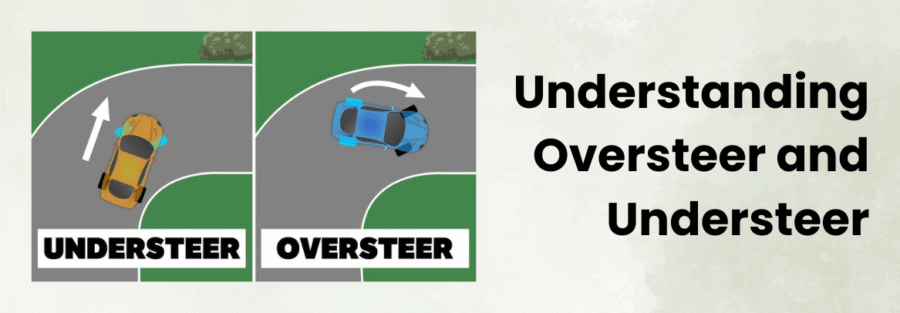In the realm of vehicle dynamics, the terms oversteer and understeer are critical for understanding how a vehicle behaves during cornering. These concepts are vital for drivers, engineers, and designers alike, as they directly impact vehicle handling, safety, and performance. Here’s a closer look at what oversteer and understeer mean, how they occur, and their implications for driving dynamics.
1) Defining Oversteer and Understeer
Oversteer: This occurs when the rear wheels of a vehicle lose traction before the front wheels during a turn, causing the rear end to slide outwards. In essence, the vehicle turns more than the driver intends. Oversteer is often described as a “tail-happy” behavior and can lead to a loss of control if not managed properly.
Understeer: Conversely, understeer happens when the front wheels lose traction before the rear wheels during a turn, causing the vehicle to turn less than the driver intends. In this scenario, the car feels as if it is “plowing” straight ahead, even when the driver is turning the steering wheel.
2) Causes of Oversteer and Understeer
Oversteer:
- Excessive Throttle: Applying too much power while cornering can cause the rear wheels to spin, leading to loss of traction.
- Braking in a Turn: Sudden braking while turning can transfer weight forward and reduce grip at the rear wheels.
- Suspension Setup: A rear suspension that is too stiff or a front suspension that is too soft can contribute to oversteer.
- Weight Distribution: A rear-heavy vehicle can also be more prone to oversteer.
Understeer:
- Insufficient Throttle: Not applying enough power can lead to a loss of grip at the front wheels, especially in front-wheel-drive vehicles.
- Excessive Speed: Entering a turn too quickly can overwhelm the front tires’ grip.
- Suspension Setup: A front suspension that is too stiff or a rear suspension that is too soft can exacerbate understeer.
- Tire Condition: Worn or improperly inflated front tires can lead to understeer.
3) Implications for Driving
- Handling Characteristics: Understanding the balance between oversteer and understeer is essential for vehicle handling. Sports cars are often designed with a slight tendency toward oversteer for agile cornering, while family sedans typically exhibit understeer for stability and safety.
- Driver Response:
- In Oversteer: Drivers can countersteer by turning the steering wheel in the opposite direction of the skid to regain control. However, this requires quick reflexes and practice.
- In Understeer: The appropriate response is to reduce speed by easing off the throttle. Unlike oversteer, understeer is often easier for novice drivers to manage, as it feels more predictable.
- Caliber Technologies has developed its own in-house tool that can be used for a quick analysis of a vehicle-level architecture impact and tire definition for better lateral and yaw dynamics.

Figure: Yaw and Lateral dynamics of a vehicle with a trailer
4) Tuning Vehicle Dynamics
For engineers and designers, understanding and manipulating oversteer and understeer is crucial when tuning vehicle dynamics. Factors like suspension geometry, weight distribution, and tire selection all play a role in achieving the desired handling characteristics.
- Adjusting Suspension: Engineers can modify suspension components to fine-tune the balance between oversteer and understeer based on the intended use of the vehicle. For example, performance vehicles might have stiffer rear springs to promote oversteer, while off-road vehicles might be designed to minimize both.
- Weight Distribution: Optimizing weight distribution can enhance stability. A well-balanced vehicle will provide a predictable driving experience, making it easier for drivers to maintain control.
Conclusion
- Understanding oversteer and understeer is fundamental to vehicle dynamics, forming the foundation for achieving both safety and performance. Recognizing the causes, implications, and corrective measures for these behaviors allows drivers to navigate corners with greater confidence and control.
- For engineers, tuning a vehicle’s chassis and suspension to strike the right balance between oversteer and understeer is critical to delivering a responsive, predictable, and enjoyable driving experience.
- At Caliber Technologies, we bring advanced Multibody Dynamics (MBD) and parametric vehicle modeling expertise to this challenge — enabling fast, high-fidelity simulation of suspension geometry, tire behavior, and load transfer. Our virtual development methods allow engineers to explore design trade-offs, validate control strategies, and optimize handling balance before physical prototypes are built.
- As automotive technology continues to evolve, these capabilities are redefining how engineers understand and shape vehicle dynamics — leading to safer, more agile, and more engaging vehicles on the road. Whether you’re an enthusiast, professional driver, or development engineer, mastering these dynamics is essential to navigating the future of intelligent vehicle design.



